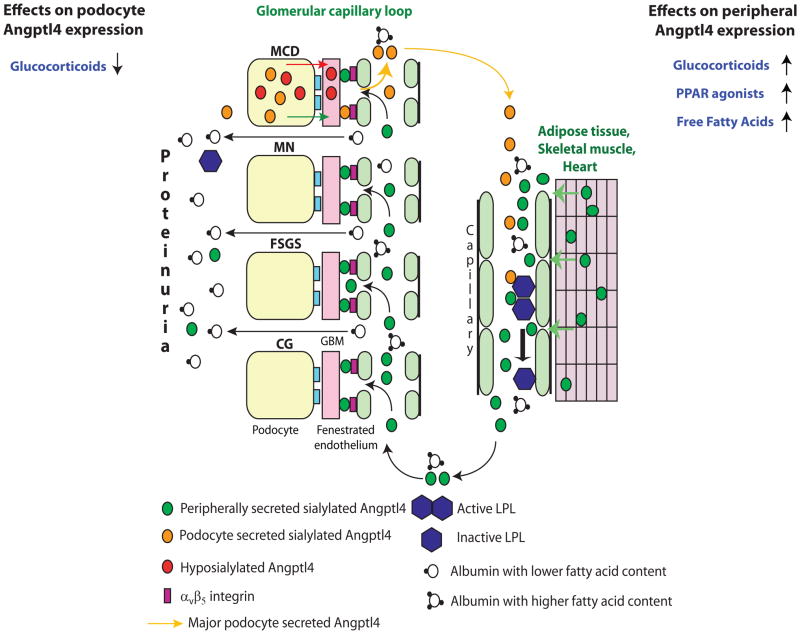Figure 1.
Diagrammatic representation of the production of increased circulating Angptl4 protein and its biological effects. The circulating, sialylated form of Angptl4 is secreted from peripheral organs (mostly skeletal muscle, heart and adipose tissue) in minimal change disease (MCD), membranous nephropathy (MN), focal and segmental glomerulosclerosis (FSGS) and non-HIV collapsing glomerulopathy (CG). In addition, podocytes in MCD secrete two forms of Angptl4: a hypo-sialylated form that remains restricted to the kidney and induces proteinuria7; and a sialylated form that enters the circulation. Podocytes are not a significant source of circulating Angptl4 in MN, FSGS and CG. Circulating Angptl4 has two major effects in nephrotic syndrome: It binds to glomerular endothelial αvβ5 integrin and reduces proteinuria. It also inactivates endothelium bound LPL in skeletal muscle, heart and adipose tissue, some of which is lost in the urine, thereby reducing hydrolysis of triglycerides to FFA, and resulting in hypertriglyceridemia. The effects of existing drugs on podocyte and peripheral Angptl4 expression are also illustrated. (reproduced from reference 20)

